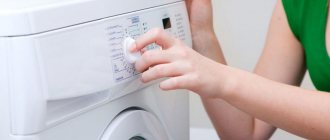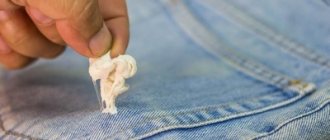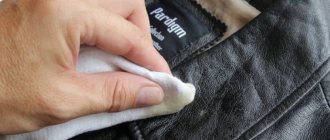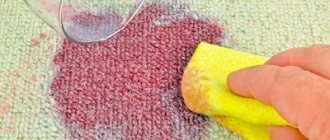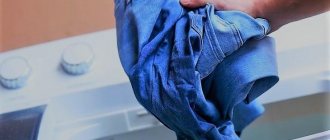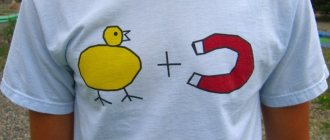An iron is necessary in every home and is a high-tech device that turns ironing into a complete pleasure. Its main and fundamental element is the base, which has various types of surface: titanium, cermet, stainless steel, aluminum, Teflon. But no matter what the coating of the iron is, it naturally tends to become dirty over time during use. You need to know how to clean it without harming the sole. In this article we have collected for you the best tips on how to clean the soleplate of your iron easily and simply!
The best way to remove carbon deposits from irons
A dirty electrical appliance can ruin your clothes and give yourself a very unpleasant surprise. Especially on a holiday when you want to look your best. The dirtier the base, the greater the likelihood of material sticking to it during the ironing process and, as a result, the item may be burnt. The bottom of the iron should always be clean and shiny. You should monitor this very carefully. However, what should you do if it so happens that you didn’t take care of the iron? It’s okay, now we’ll tell you how to use simple steps to restore the sole and iron to their former originality with your own hands.
There are several improvised means that you can use to clean the soleplate of your iron at home:
- hydrogen peroxide;
- salt;
- lemon acid;
- soap;
- indelible pencil;
- vinegar;
- toothpaste;
- paraffin;
- sulfur from a matchbox;
- regular baking soda;
- nail polish remover (acetone cannot be used instead).
The most gentle treatment option is peroxide. You need to apply a few drops to a cotton pad and rub the surface with the necessary force. All dirt will remain on the disc.
Other methods: how to clean an iron from burnt fabric
Three ammonia products for cleaning the soleplate of an iron from burning:
- mix ammonia and vinegar in half;
- drop 2-3 drops of ammonia into the juice from one lemon;
- use of pure ammonia.
For all recipes, there is one way to clean carbon deposits on an iron:
- wipe the hot device with one of the solutions;
- In case of old contamination, leave the cold device overnight on the material soaked in the solution.
The cleaned unit is wiped with a dry cloth.
How to clean a burnt iron with hydrogen peroxide:
- heat the device;
- Wipe the bottom with cotton wool and peroxide solution;
- iron an old unnecessary piece of rag.
If you use a hydroperite tablet instead of liquid, remove its remains with a cloth before ironing.
A burnt iron, what else can be used to clean it:
- Rub fresh dirt on a hot product with laundry soap. When cool, wipe with a damp cloth.
- A cold device is cleaned with a cotton swab dipped in nail polish remover or paint thinner.
- The burnt iron is heated and the dirty area is cleaned with the side of the matchbox (where the sulfur is).
- Another way to clean an electrical appliance: lubricate the surface with toothpaste, rinse with water. If ingested, steam. Wipe with a dry cloth.
How to quickly scrub an iron: combine salt and paraffin chips in equal proportions, put it in a bag and thoroughly wipe the hot bottom.
Cleaning carbon deposits on an iron is easy if it is fresh. You will have to tinker with old stains.
We invite you to watch a video with tips for cleaning your iron:
© 2021 textiletrend.ru
How to remove carbon deposits from an iron
An easy way to clean the soleplate of any type of iron is to use a special pencil: “Typhoon”, REAM or DIAS. There are several rules on how to clean the soleplate of an iron with a pencil, following which you will not harm either yourself or the device:
- you should heat the device to 1400 Celsius in a vertical position, place it sideways on an unnecessary fabric;
- rub the contaminated area of the iron with the product;
- wipe the sole with a linen or cotton napkin;
- If the iron has a steam mode, you need to use this function and release steam several times.
Important! The composition of the pencil is poisonous and contains acid. Do not allow the molten substance to come into contact with the skin, as it can cause chemical burns. Be extremely careful and careful when handling it.
The pencil will begin to melt and a pungent odor will appear. As a result of the influence of the pencil on the iron, it will remove plaque of any origin, soot, rust and scale from the burnt surface of the iron. If the steam holes are clogged with sediment, simply lubricate them and turn on the steam. After the procedure, wipe the sole with a dry cloth and remove any residue, and clean the steam holes with a cotton swab.
Cleaning with salt
The most common salt will help to remove stuck fabric from the iron. This is the most effective method available and can be used as follows:
- A small handful of table salt should be wrapped in a piece of natural, clean, lint-free cloth, for example, a cotton scarf. The iron must be heated, after which, using a bag, carefully remove the adhered fabric from the surface of the sole. You should not press hard; usually medium force is enough for complete cleaning.
- For the second method, pour ½ cup of salt onto paper and level it, heat the iron to maximum temperature. Then you need to carefully “iron” the salt layer until the dirt comes off completely. This method is not suitable for ceramic coatings, since salt can easily damage the sole.
Before you start cleaning the soleplate of your iron, be sure to read the manufacturer's care recommendations. Some types of surfaces are very sensitive to mechanical stress, which means that abrasives cannot be used on them. You also need to remember that the self-cleaning function, available on all models in the middle and higher price segments, only allows you to get rid of scale – it will not remove burnt-on fabric.
How to clean at home with soap and salt
When cleaning the iron, or rather its base, which is covered with delicate material, use laundry soap.
- Warm up the heating appliance thoroughly.
- Then turn off the power and rub soap on the hot surface.
- Wait until the iron cools down.
- Dry the iron with a damp sponge. The deposits will come off easily.
However, there is one small drawback: the steam holes can become clogged with soap. They need additional cleaning with cotton swabs and steam. And this takes time.
If you don't have soap, use salt. Pour “Extra” onto white paper. You will need to heat the device at full power and iron the salt several times. The carbon deposits should clear.
Just don't take the newspaper. Newspaper paint will stick to the sole and ruin everything.
How to remove carbon deposits from an iron with baking soda and vinegar
Cover the cold surface with baking soda, adding a few drops of water. You need to mix everything to get a mushy, homogeneous consistency. Apply the composition to the sole and leave for 5-10 minutes, then wipe with a napkin or sponge.
Electrical appliances with Teflon, ceramic or enamel bases should not be cleaned with abrasives. Metal knives and brushes are also strictly contraindicated for such soles. To clean the listed iron bases, prepare the following product: dilute ammonia and acetic acid in a 1:1 ratio. Wipe the warm base; do not heat the iron too much. Don't forget to disconnect the electrical appliance from the power supply.
When working with caustic ingredients, be careful: work in a well-ventilated area and protect your hands with gloves. If the dirt is very ingrained and cannot be wiped off, you can place the cooled device on a cloth moistened with vinegar for 12 hours.
If you know how to clean an iron at home, then your tool will always be clean, ironing will become an easy task and you won’t have to buy a new device.
How to clean an iron with a candle
The most delicate surfaces can be cleaned perfectly with a candle. A paraffin candle is a gentle and gentle way of cleaning.
The process is performed in the following order:
- heat the device and disconnect from the power supply;
- then you need to take a candle, wrap it in a thin cotton cloth and iron the dirt. When heated, the paraffin will melt, flow and wash away the stain;
- After this, turn on the iron again and iron the napkin or rag. This will help remove wax residue and stains.
How to wash the handle and remaining surface of the iron
From constant use of irons, not only the sole, but the entire surface becomes dirty. The handle especially suffers. To clean the top, you can use any fat-dissolving dishwashing detergent or baking soda. But you should know exactly how to clean the surface of the iron.
- Firstly: clean the iron only when it is turned off.
- Secondly: do not wet the sponge too much so that water does not get inside and a short circuit does not occur when turned on.
- Thirdly: do not use products with abrasive additives or metal devices.
Features of cleaning the soleplate of different types of irons at home
The soleplate of the iron is made from various materials. Each type has special properties, on which resistance to stains depends. In addition, some types of coatings require careful cleaning, otherwise the device will quickly fail.
Ceramic and metal-ceramic sole
Irons with ceramic and glass-ceramic soles are easy to clean, heat up evenly and glide easily. However, this coating is fragile and prone to cracks, scratches and chips.
Compared to ceramic options, cermet soles are more resistant to mechanical stress, namely the appearance of scratches and cracks. However, with intense impacts, chips are likely to occur. Popular options include Ultragliss Diffusion, CeraniumGlisse and SteamGlide.
When cleaning ceramic and metal-ceramic soles, the use of abrasive detergents and metal blades is unacceptable. It is recommended to give preference to special ceramic cleaning products.
You can also use:
- vinegar;
- hydrogen peroxide:
- toothpaste without abrasive particles;
- ammonia;
- lemon juice.
Teflon coated sole
Teflon is a plastic that is widely used in technology and everyday life. Teflon-coated irons heat up quickly, glide well, and work better than others at low temperatures. However, they are very fragile and difficult to clean from carbon deposits.
Cracks, scratches and chips will not appear if you carefully clean the sole. The following tools are suitable for this:
- cleaning pencil;
- hydroperite;
- vinegar;
- lemon acid;
- nail polish remover without acetone;
- hydrogen peroxide;
- chalk;
- dentifrice;
- toothpaste.
Do not rub the Teflon coating with hard or metal objects. You will also have to give up abrasive substances.
Metal soles
Metal soles come in aluminum and steel. Each option has its own characteristics. It is also worth considering that the plates of all irons are metal, while the working part, the sole, can be made of Teflon, titanium and other materials.
Stainless steel sole
A stainless steel sole is considered the best option. This material is durable and glides well. In addition, the stainless steel soleplate is easy to clean. The disadvantages include long heating time and weight. Some manufacturers produce improved options:
- with chrome - protects against corrosion, extends service life;
- with aluminum - increases thermal conductivity, improves glide;
- with sapphire coating - increases resistance to mechanical damage;
- additional laser processing - increasing non-stick properties, increasing service life.
The stainless steel soleplate is cleaned using the following products:
- toothpaste;
- dentifrice;
- vinegar;
- salt;
- soda;
- lemon acid;
- cleaning pencil.
Fresh carbon deposits can be removed using a wooden or metal spatula. It is not recommended to use a knife as it may scratch the surface.
Aluminum sole
Aluminum is the most budget-friendly material. An iron with such a sole is low in cost, however, many problems arise with it in everyday life. The aluminum sole is absolutely not resistant to damage, so scratches and microdamages quickly appear on it, into which dirt and carbon deposits become clogged. However, there are improved options:
- Anodized aluminum. The sole is coated with an oxide film, which increases density and smoothness.
- Aluminum with Teflon. It has non-stick properties, but scratches quickly and wears off over time.
Aluminum is a soft metal, so you will have to avoid abrasives and hard sponges and brushes.
Safe means for cleaning aluminum soles are:
- pencil;
- vinegar;
- toothpaste without abrasive;
- dishwashing liquid;
- soda.
It is recommended to polish the aluminum soleplate with a piece of wool cloth after cleaning to prolong the cleanliness.
Titanium non-stick soleplate
Titanium coating is applied to stainless steel. Such soles are resistant to mechanical stress, strong, durable and have non-stick properties. However, like stainless steel irons, they take a long time to heat up and weigh a lot.
Titanium soles can be easily cleaned with the following products:
- toothpaste;
- soda;
- dishwashing liquid;
- salt;
- pencil;
- vinegar;
- ammonia;
- acetone.
In addition, you can use a wooden spatula or a soft steel wool.
Enamel outsole
The enamel is particularly resistant to scratches, impacts, chips and other mechanical damage. However, over time, the strength decreases, as a result of which the sole may begin to peel off and become chipped.
Enameled soles are quite durable, so there are no restrictions on the choice of cleaning products. Most often used:
- toothpaste;
- soda;
- vinegar;
- pencil;
- salt;
- ammonia;
- citric acid.
You can also use wooden spatulas and soft metal brushes and scourers.
How to remove scale
A very important point when caring for an electrical appliance with a steaming function is cleaning the soleplate from scale. It pours out with water and steam and settles on things. It is simply impossible to remove such stains. To avoid trouble, it is better to take distilled water. But if scale has formed, you can fight it in the following ways:
- use the self-cleaning function. The maximum amount of water is poured, the regulator is set to the highest temperature, and the self-cleaning mode is turned on. After turning off, drain the liquid along with the sediment flakes into the sink;
- Pour 20-30 g of citric acid into 200 ml of distilled water, let it dissolve, pour into the tank and turn on the highest temperature. Shake the iron several times and turn on the steam. Limescale and dirt will remain on the cloth and base. You only need to rinse the container and wipe the heated surface. How to descale the soleplate of any iron? Very simple. It can be easily removed with a damp cloth; you can moisten it with vinegar or citric acid. Use cotton swabs to clean the inside of the holes and the tool is ready for use again.
In addition to the methods described, you can take Coca-Cola or Sprite - carbonated drinks containing acid. Pour them into the tank and clean them. The result will please you, but parents need to think about whether it is worth buying this water for their children.
Now you know how to clean the surface of the iron, both the lower and upper parts. Folk remedies have varying effectiveness, but the most convenient and fastest way to combat carbon deposits is a pencil. To avoid having to endlessly clean, study the temperature regime that is suitable for different types of fabrics (silk, wool, synthetic materials) and try to iron without disturbing it. The sole will be clean and ironing will be quick.
Methods for cleaning the steam vents on the soles
As a rule, ordinary cotton swabs soaked in soapy water are used to clean the steam outlets. However, this method is effective in combating minor stains.
To remove plaque and scale buildup, it is recommended to use an iron cleaning concentrate or kitchen and bathroom cleaner. Cilit, Vanish and any other will do.
Mode of application:
- Turn the iron over.
- Pour cleaning agent into each hole.
- Wait 15-20 minutes.
- Rinse the iron under running water for 5-7 minutes.
Iron cleaning tablets are no less effective. As a result, even stubborn lime deposits are removed. The tablets are produced by the Paterra brand.
Mode of application:
- Dilute 1 tablet in 500 ml. water.
- Pour 250 ml. into a water container.
- Turn on the iron in steam mode.
- When all the liquid is gone, pour in the remaining solution and release the steam from the iron.



